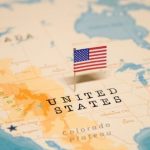 Technology
Technology  Technology
Technology  Humans
Humans 10 Everyday Human Behaviors That Are Actually Survival Instincts
 Animals
Animals 10 Animals That Humiliated and Harmed Historical Leaders
 History
History 10 Most Influential Protests in Modern History
 Creepy
Creepy 10 More Representations of Death from Myth, Legend, and Folktale
 Technology
Technology 10 Scientific Breakthroughs of 2025 That’ll Change Everything
 Our World
Our World 10 Ways Icelandic Culture Makes Other Countries Look Boring
 Misconceptions
Misconceptions 10 Common Misconceptions About the Victorian Era
 Mysteries
Mysteries 10 Strange Unexplained Mysteries of 2025
 Miscellaneous
Miscellaneous 10 of History’s Most Bell-Ringing Finishing Moves
 Technology
Technology Top 10 Everyday Tech Buzzwords That Hide a Darker Past
 Humans
Humans 10 Everyday Human Behaviors That Are Actually Survival Instincts
 Animals
Animals 10 Animals That Humiliated and Harmed Historical Leaders
Who's Behind Listverse?

Jamie Frater
Head Editor
Jamie founded Listverse due to an insatiable desire to share fascinating, obscure, and bizarre facts. He has been a guest speaker on numerous national radio and television stations and is a five time published author.
More About Us History
History 10 Most Influential Protests in Modern History
 Creepy
Creepy 10 More Representations of Death from Myth, Legend, and Folktale
 Technology
Technology 10 Scientific Breakthroughs of 2025 That’ll Change Everything
 Our World
Our World 10 Ways Icelandic Culture Makes Other Countries Look Boring
 Misconceptions
Misconceptions 10 Common Misconceptions About the Victorian Era
 Mysteries
Mysteries 10 Strange Unexplained Mysteries of 2025
 Miscellaneous
Miscellaneous 10 of History’s Most Bell-Ringing Finishing Moves
10 Mind-Melting Facts About American Cheese
American cheese: it’s the neon-orange, perfectly square, questionably “cheese” food that somehow ends up on everything from burgers to grilled sandwiches. But beneath its shiny plastic wrapper lies a processed past full of strange science, unexpected history, and some downright bizarre truths. Whether you love it, loathe it, or aren’t even sure if it’s technically cheese, these weird facts about American cheese are bound to surprise you.
Related: 10 Specialty Foods Once Common in America
10 It Isn’t Cheese
It may be hard to believe, but it is true. Although American cheese is made from byproducts of cheese, it is not actually a real cheese, according to the American Food and Drug Administration. It’s classified as a “pasteurized process cheese,” setting it apart from other natural cheeses.
However, some don’t agree with the FDA’s classification. American “cheese” is cheese mixed with other ingredients such as milk, cream, whey products, and, critically, sodium citrate. It’s the sodium citrate that truly makes American cheese different, as it helps the food emulsify and prevents the separation of fats and proteins during melting. This is what makes it so creamy and smooth even after being heated, making it the perfect option for hamburgers and sandwiches, which is what it’s become known for in popular culture (besides its plastic-y look.)[1]
9 Any Cheese Can Be Made into American Cheese
Remember how sodium citrate is what truly separates American cheese from other cheeses? Well, that goes both ways.
The classic American cheese we know and love is generally made with either Colby or cheddar cheese or a mix of both, with milk or cream added for taste. But you can actually make any cheese into processed cheese (like American cheese) by simply adding the sodium citrate and making the cheese more meltable. Thus, you can have Pepper Jack, Provolone, or even some stinky Limburger “American cheese.”[2]
8 It Was Once Given Out by the U.S. Government
Perhaps the most infamous use of American cheese came about in the 1980s when the United States began distributing the cheese as part of federal need-based programs. Suddenly, the unnaturally bright food was a source of shame for poverty-stricken Americans who couldn’t afford to turn it down.
Though cheese had been part of federal assistance programs since the 1940s, in the early 1970s, the United States faced a severe dairy shortage. President Jimmy Carter subsidized dairy products in an effort to alleviate the problem, and it worked a little too well.
Dairy farmers were suddenly producing much more milk to utilize the new government support. The government bought all the milk the farmers couldn’t sell and turned it into cheese, which lasted longer—but not long enough. The cheese began to mold, and food was being wasted in huge amounts, making President Ronald Reagan look bad. As a result, he freed 30 million pounds of cheese from the government’s surplus. He created the Temporary Emergency Food Assistance Program, which handed out the ultra-processed and, thus, longer-lasting cheese to the poor and hungry.[3]
7 It Was Almost Called “Embalmed Cheese”
In a time when no cheese had been processed with chemicals yet, the United States government needed to figure out what to call this new introduction into the food world, as it couldn’t just be classified as “cheese.” They eventually went with “pasteurized process cheese” to separate themselves from traditional cheeses.
If that sounds ridiculous, you may need a little more backstory. When processed cheeses began to emerge, traditional cheesemakers worried that sales would plummet and their careers would suffer. So they pushed for government regulators to ensure people knew what they were getting wasn’t 100% cheese. They suggested it be called “embalmed cheese” because one of the emulsifiers used in processed cheese was also used to embalm bodies.
Unfortunately for Big Cheese, that name did not stick.[4]
6 It Isn’t Naturally Yellow
The bright yellow hue of American cheese (and, as a result, many macaroni and cheese and other pasta dishes) has become iconic. If your burger or grilled cheese is dripping with white cheese, you’ll probably assume the chef has used Swiss, mozzarella, or a myriad of other white cheeses—but that may not be the case.
American cheese is naturally white, too, but it’s dyed yellow. Natural cheeses are generally slightly yellow or orange due to the butterfat in cow’s milk. If the cream has been skimmed from the milk, the cheese made from it would be white, indicating its lower quality. So, in the days before anyone cared about preservatives or unnatural dyes, cheese makers started using things like saffron and marigolds to brighten their product and make it appear to be premium quality.[5]
5 It Has an Extremely Low Melting Point
No one really wants to eat American cheese on its own. You won’t find it on a charcuterie board, for example. It’s almost exclusively used for sandwiches, usually hot ones like grilled cheeses or hamburgers.
This is because it has a much lower melting point than most cheeses, making it easier and faster to add to a meal. The added preservatives, like sodium citrate and other emulsifiers, also make the cheese much smoother when it melts, creating an easy liquid, almost velvety texture, which makes it ideal for sauces. That’s why it’s a great addition to food and snacks but not so great all on its own.[6]
4 It’s Been in Space
Even though the moon isn’t made of cheese, it has come pretty close to meeting the food. At least, it’s come closer than you might think.
In 2021, an American astronaut stationed on the International Space Station requested that her favorite cheese be sent up to her. Though the Belgian cheese company Van Tricht was surprised (and thought it was a joke), they were more than happy to oblige. They sourced some American cheese from a shop in Houston that the astronaut had been to just a few months before.
After going through NASA-run quality and safety tests, a myriad of cheeses were sent to the homesick American, including, of course, her homeland’s namesake cheese.[7]
3 It Helped Bring Cheese to the Masses
Today, you can walk into almost any grocery store or supermarket and find an array of cheeses on sale at reasonable prices. More expensive cheeses still exist, but it’s not uncommon to see nearly everyone purchasing and enjoying the dairy product.
A century ago, this was not the case. Cheese was expensive and a luxury product, not something that could be purchased on a whim. All cheese was “fancy cheese” thanks to the long aging process and care required for production. American cheese helped break down these barriers, offering a budget-friendly alternative to what was seen as an elitist food. In fact, American cheeses are often still cheaper than other cheeses since they don’t need to be aged or sold as quickly.[8]
2 It Was Invented in Switzerland
In 1911, two food chemists faced a problem. How could they lengthen the shelf life of cheese?
Though cheese was a great-tasting food and a good source of nutrients, its tendency to spoil quickly made it difficult to sell. But Walter Gerber and Fritz Stettler figured out that if you combine it with sodium citrate, your ordinary cheese becomes smooth and almost immortal.
Gerber and Stettler used Emmentaler cheese, though, not the cheddar that we’re used to. Why would they use a European cheese? Because they were in Europe, of course. Switzerland, to be exact. This means that “American” cheese wasn’t even created in its titular country.
Maybe we should start calling it Swiss cheese.[9]
1 It Was Popularized by a Canadian
Okay, so American cheese was invented in Switzerland, but surely it must have been made popular thanks to Americans, right?
Wrong. It may come as no surprise to learn that James Kraft, founder of Kraft Foods Inc., was the one who really ushered American cheese into popularity. After all, those plastic-wrapped Kraft Singles are the most famous kind of American cheese. What may be a shock is that Kraft himself was actually Canadian. So maybe we should actually call it Canadian cheese.
Though the process was invented in Switzerland, it was Kraft, while living in Chicago, who truly perfected the addition of sodium citrate and capitalized on its long shelf life. “American” cheese became a way to refer to cheap processed cheeses. Though no one knows why that nickname stuck, one theory has prevailed. Initially, American cheese was made with a blend of Colby and cheddar. Some believe the moniker “American” was a reference to the United States’ multicultural history of being a “melting pot” of races and heritages.[10]








